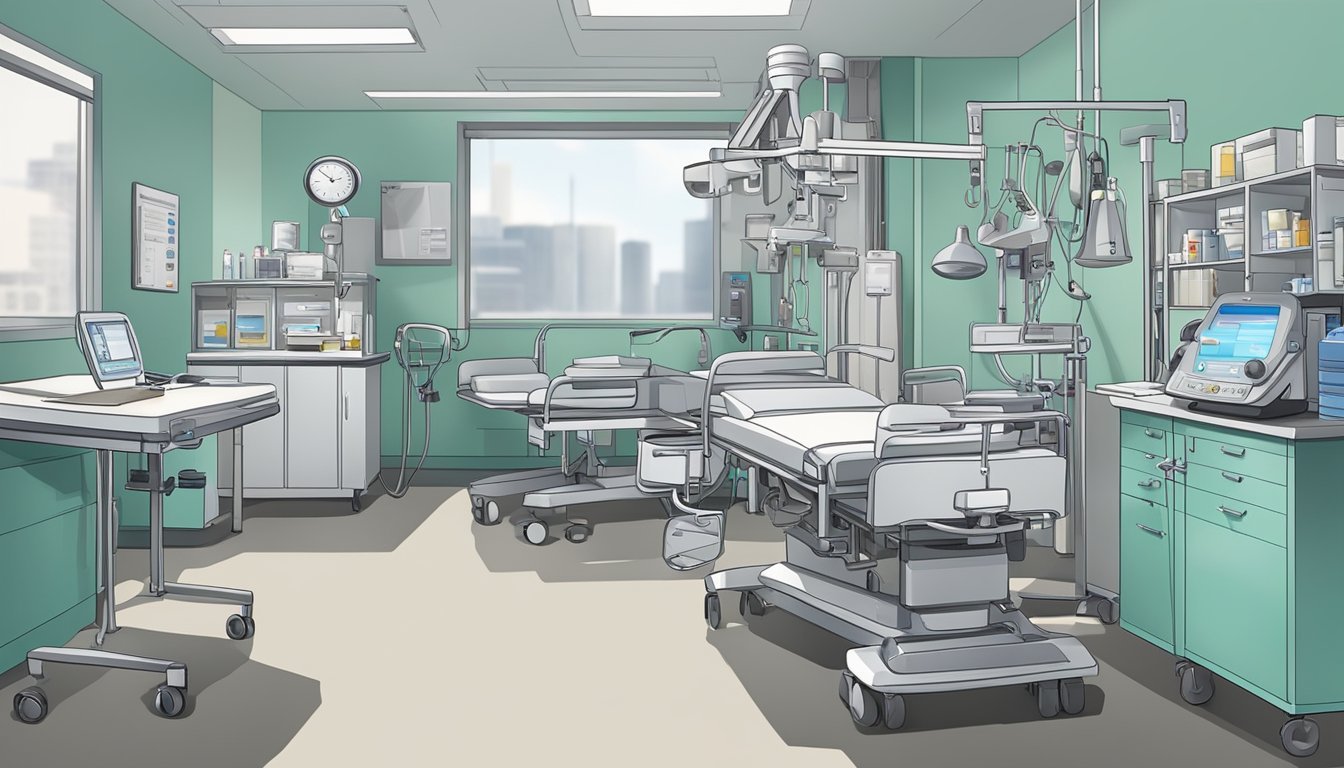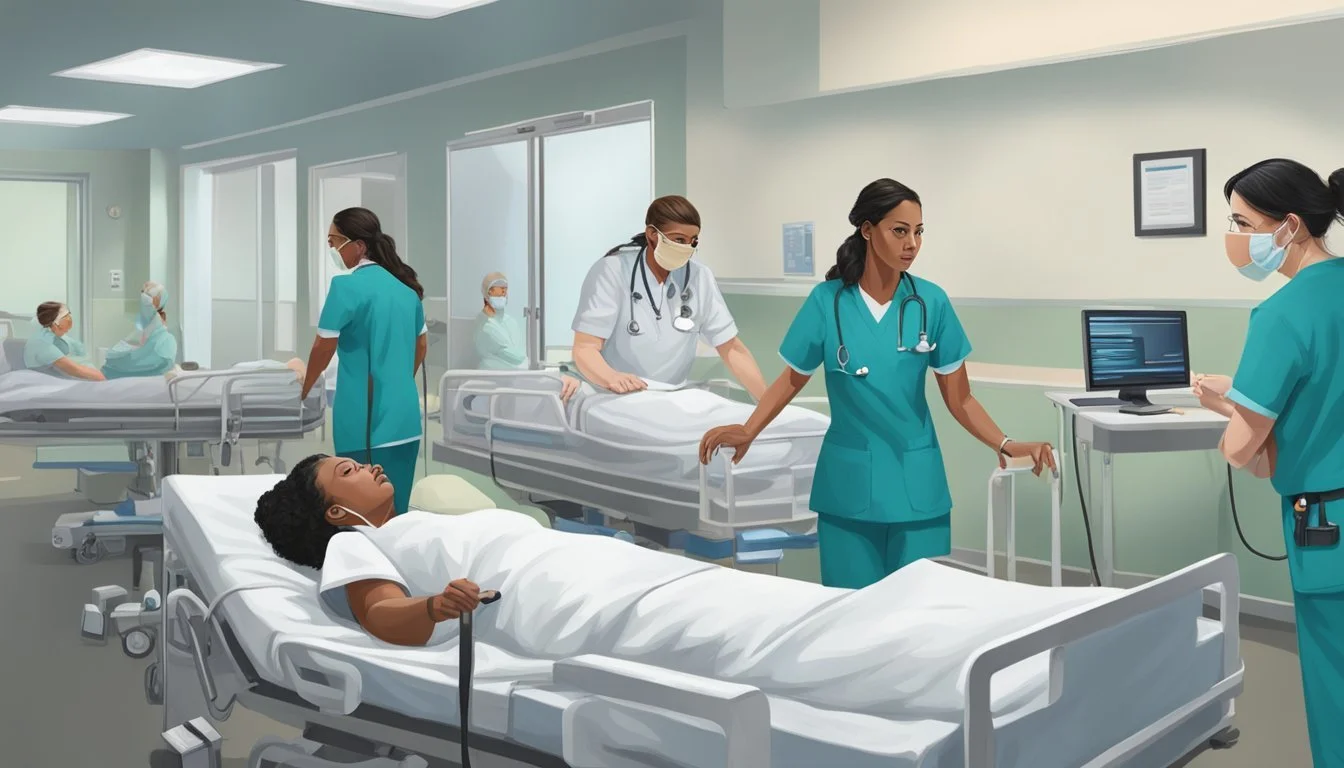Richard Speck: 7 Nursing Practices Changed After the "Born to Raise Hell" Killer's Attack
Safety Reforms in Healthcare
Richard Speck's brutal attack on eight student nurses in Chicago on July 13, 1966, shocked the nation and left an indelible mark on the healthcare profession. The horrific events of that night exposed vulnerabilities in hospital security and highlighted the need for improved safety measures to protect healthcare workers.
The aftermath of Speck's crimes led to significant changes in nursing practices and hospital security protocols across the United States. These changes aimed to enhance the safety of nurses and other healthcare professionals, both in their workplace and living quarters. The tragedy sparked a nationwide conversation about the importance of protecting those who dedicate their lives to caring for others.
1) Enhanced Security Protocols
The Richard Speck murders prompted significant changes in hospital security practices. Many healthcare facilities implemented stricter access control measures to protect staff and patients.
Hospitals began installing security cameras in corridors and entrances. This allowed for continuous monitoring of who entered and exited the premises.
Visitor management systems were introduced, requiring guests to sign in and wear identification badges. Some institutions established set visiting hours to limit unauthorized access during nighttime hours.
Security personnel presence increased, with guards patrolling hospital grounds more frequently. Many facilities also improved lighting in parking areas and around building perimeters to enhance safety.
Nurses and other staff members received training on security awareness and emergency response procedures. This included learning to identify potential threats and how to react in dangerous situations.
Panic buttons and alarm systems were installed in patient rooms and nursing stations. These allowed staff to quickly alert security or law enforcement if they felt threatened.
2) Mandatory Crisis Training
After the Richard Speck murders, nursing schools and hospitals recognized the need for improved safety measures. One significant change was the implementation of mandatory crisis training for nursing staff and students.
This training focused on teaching nurses how to respond effectively in emergency situations, including violent attacks. It covered topics such as situational awareness, de-escalation techniques, and self-defense strategies.
Nurses learned to identify potential threats and practiced protocols for alerting authorities quickly. The training also emphasized the importance of teamwork and communication during crisis events.
Many institutions incorporated regular drills and simulations to reinforce these skills. These exercises helped nurses develop muscle memory for emergency procedures and increased their confidence in handling high-stress situations.
The mandatory crisis training became a standard part of nursing education and ongoing professional development. It aimed to empower nurses with the knowledge and skills to protect themselves and their patients in dangerous scenarios.
3) Patient Privacy Revisions
The Richard Speck murders prompted significant changes to patient privacy practices in healthcare settings. Hospitals and nursing schools implemented stricter policies regarding patient information access and dissemination.
New protocols were established to limit the sharing of patient details, particularly those that could compromise safety. This included restricting the public disclosure of room numbers and patient locations within medical facilities.
Healthcare institutions revamped their visitor policies. They introduced more rigorous screening processes and required visitors to sign in and out. Some facilities implemented badge systems to easily identify authorized personnel and guests.
Hospitals also enhanced their record-keeping practices. They improved security measures for storing and accessing patient files, both physical and electronic. This helped prevent unauthorized individuals from obtaining sensitive information.
These privacy revisions aimed to create a safer environment for patients and staff. They sought to balance the need for open communication in healthcare settings with the imperative to protect vulnerable individuals from potential harm.
4) Increased Mental Health Support
The Richard Speck murders highlighted the need for enhanced mental health support in nursing education and practice. Nursing schools began incorporating more robust mental health training into their curricula.
This included courses on recognizing signs of trauma and stress in both patients and fellow healthcare workers. Hospitals and clinics started offering counseling services and support groups for nurses.
Many institutions implemented employee assistance programs to provide confidential mental health resources. These programs offered short-term counseling and referrals for longer-term care when needed.
Nursing organizations advocated for better mental health coverage in employee health insurance plans. This allowed nurses to access therapy and other mental health services more easily.
Some facilities introduced regular mental health check-ins and stress management workshops for their nursing staff. These initiatives aimed to prevent burnout and improve overall well-being.
The nursing profession also placed greater emphasis on self-care strategies and work-life balance. Nurses were encouraged to prioritize their own mental health to provide better care for patients.
5) Emergency Response Drills
Nursing schools and hospitals implemented regular emergency response drills after the Speck murders. These drills aimed to prepare staff for potential crisis situations and improve overall safety protocols.
Simulations of various emergency scenarios became a routine part of training. Nurses practiced rapid communication, evacuation procedures, and lockdown protocols during these exercises.
The drills often included collaboration with local law enforcement to enhance coordination during real emergencies. This partnership helped bridge the gap between healthcare facilities and first responders.
Hospitals began conducting unannounced drills to test staff readiness at any given time. These surprise exercises provided valuable insights into areas needing improvement in emergency preparedness.
Regular evaluation and updating of emergency response plans became standard practice. Lessons learned from each drill were incorporated into revised protocols, ensuring continuous improvement in safety measures.
6) Advanced Background Checks
After the Richard Speck murders, hospitals and nursing schools implemented more thorough background checks for potential employees and students. These checks expanded beyond simple criminal records to include comprehensive screenings.
Healthcare institutions began verifying educational credentials, employment history, and professional licenses more rigorously. They also started conducting in-depth interviews and contacting personal references.
Many facilities introduced drug testing as part of their screening process. This helped identify individuals with substance abuse issues that could potentially compromise patient safety.
Fingerprint-based background checks became more common, allowing for a more accurate verification of an applicant's identity and criminal history. Some institutions also began using social media screening to gain additional insights into candidates' behavior and character.
These advanced background checks aimed to create safer environments for patients and staff. They helped identify red flags that might have been missed under previous, less stringent screening procedures.
7) Visitor Screening Improvements
After Richard Speck's brutal attack, hospitals across the United States implemented stricter visitor screening protocols. These measures aimed to enhance security and protect patients and staff from potential threats.
Many facilities introduced sign-in procedures for all visitors, requiring them to provide identification and state their purpose for visiting. This created a record of who entered the hospital and when.
Security personnel began conducting more thorough checks of visitors' belongings. Some hospitals installed metal detectors at entrances to prevent weapons from being brought inside.
Visitor badges became a common requirement, allowing staff to quickly identify authorized individuals within the facility. Time-limited passes were introduced to ensure visitors did not overstay their allotted time.
Hospitals also restricted visiting hours and limited the number of visitors allowed per patient. This helped staff maintain better control over who accessed patient areas.
Training programs were developed to teach hospital employees how to recognize suspicious behavior and respond to potential security threats. Staff members were encouraged to report any concerns promptly.
These improved screening measures significantly enhanced hospital security, creating safer environments for patients, staff, and legitimate visitors.
Overview of Richard Speck's Attack
Richard Speck's brutal attack on eight student nurses in Chicago shocked the nation and left an indelible mark on healthcare practices. The incident exposed vulnerabilities in hospital security and sparked changes in nursing education and safety protocols.
Event Description
On July 14, 1966, Richard Speck broke into a townhouse serving as a dormitory for student nurses in Chicago. Armed with a knife, he systematically bound, raped, and murdered eight young women over the course of several hours. Speck's victims ranged in age from 20 to 24 and were all students at South Chicago Community Hospital.
One nurse, Corazon Amurao, survived by hiding under a bed. Her testimony proved crucial in identifying Speck as the perpetrator. Police arrested him two days later, recognizing him by the "Born to Raise Hell" tattoo on his arm.
Impact on Public Perception
The Speck murders sent shockwaves through American society, shattering the sense of safety many associated with healthcare environments. The attack highlighted the vulnerability of young women in nursing programs and raised concerns about hospital security measures.
Media coverage of the crime was extensive, bringing the gruesome details into homes across the country. This heightened public awareness led to increased pressure on healthcare institutions to improve safety protocols and security measures for their staff and students.
The incident also sparked discussions about violence against women and the need for better protection in educational and professional settings. It prompted many nursing schools to reassess their housing arrangements and implement stricter security measures.
Changes in Nursing Security Standards
The Richard Speck murders prompted significant improvements in nursing security protocols. Hospitals and nursing schools implemented new measures to protect staff and prevent similar tragedies.
Implementation of Emergency Protocols
Hospitals developed comprehensive emergency response plans. These included clear procedures for lockdowns, evacuations, and communication during security threats. Staff received regular training on these protocols to ensure quick reactions in crisis situations.
Many facilities installed panic buttons in patient rooms and nursing stations. These allowed staff to instantly alert security of potential dangers. Hospitals also improved their coordination with local law enforcement for faster responses to emergencies.
New policies restricted visitor access, especially during night shifts. Staff were instructed to verify visitors' identities and reasons for being on the premises. Some hospitals implemented sign-in procedures and visitor badges for added security.
Enhanced Facility Security Measures
Physical security upgrades became a priority in healthcare settings. Many hospitals installed security cameras throughout their facilities, including parking areas and entrances. This provided better monitoring of suspicious activities.
Access control systems were implemented to limit entry to authorized personnel only. Key card systems and electronic locks replaced traditional keys in many areas. Security guards increased their presence, particularly during night shifts.
Improved lighting in parking lots and around building exteriors enhanced safety for staff arriving and leaving work. Some facilities redesigned their layouts to eliminate isolated areas where staff could be vulnerable. Regular security audits became standard practice to identify and address potential weaknesses in facility safety measures.





